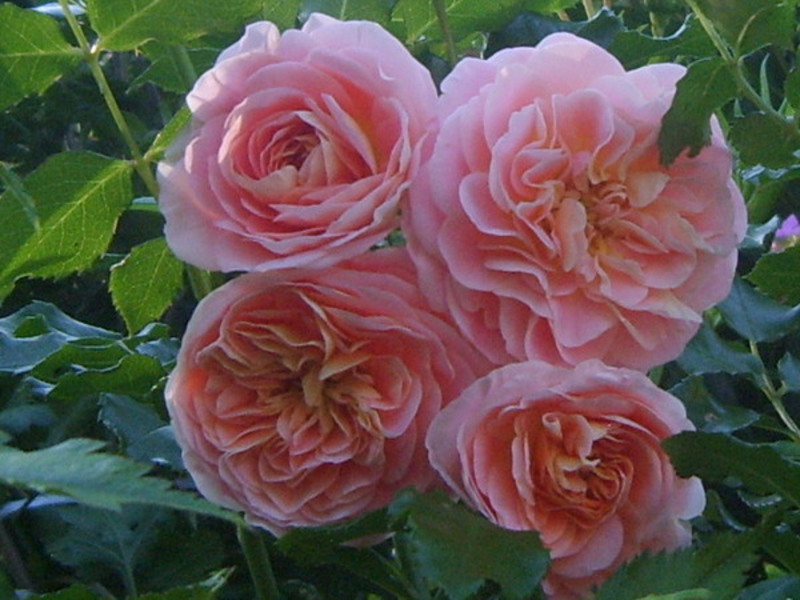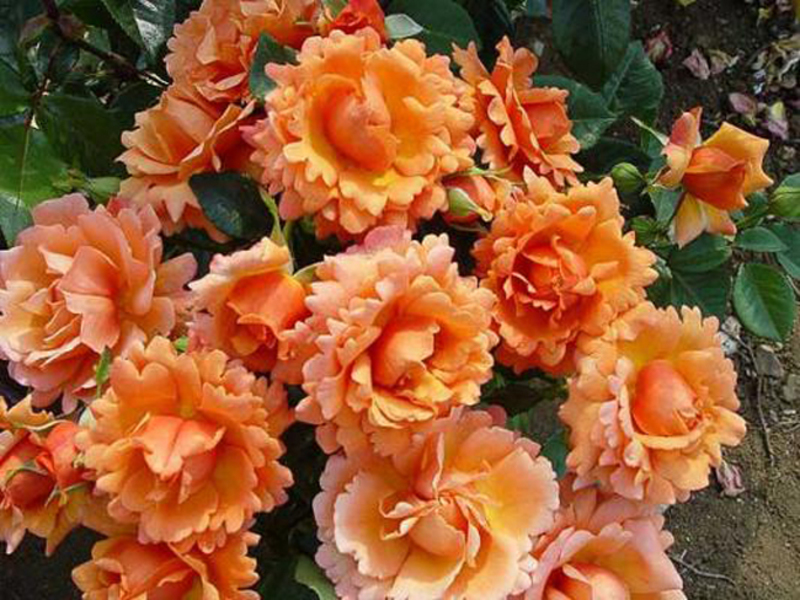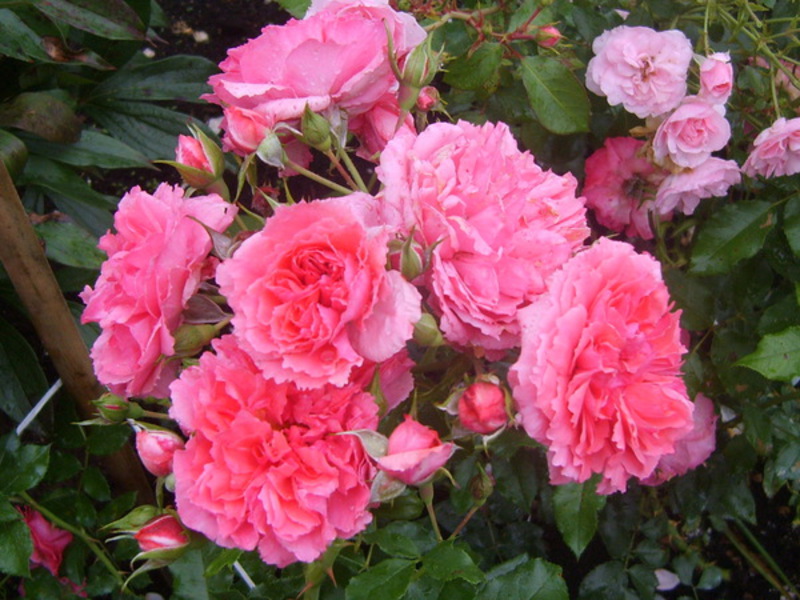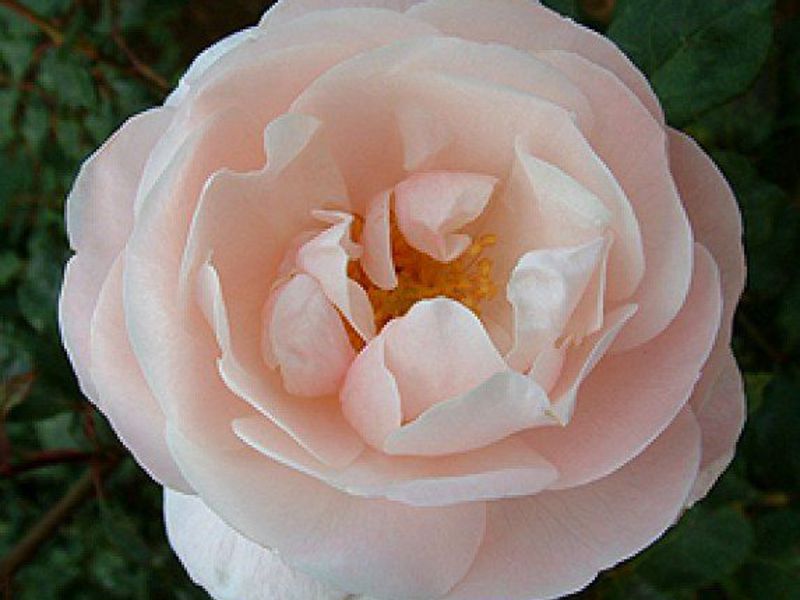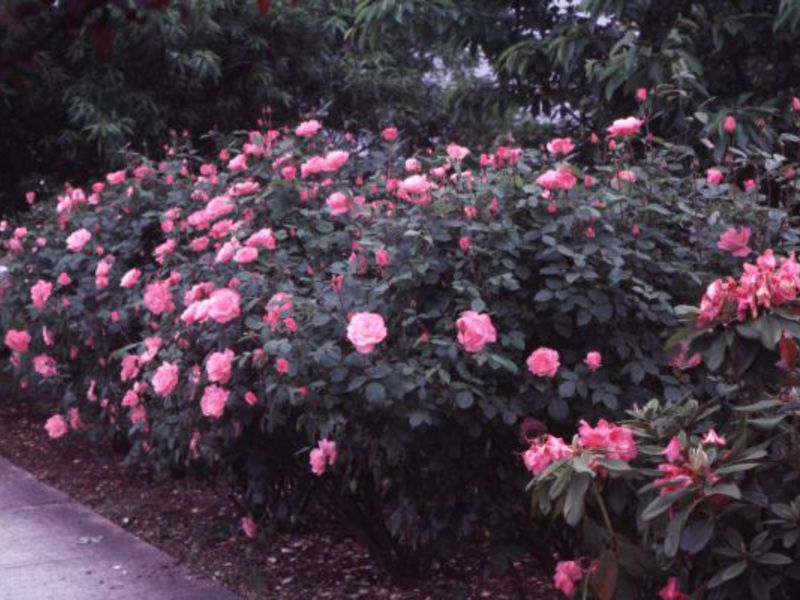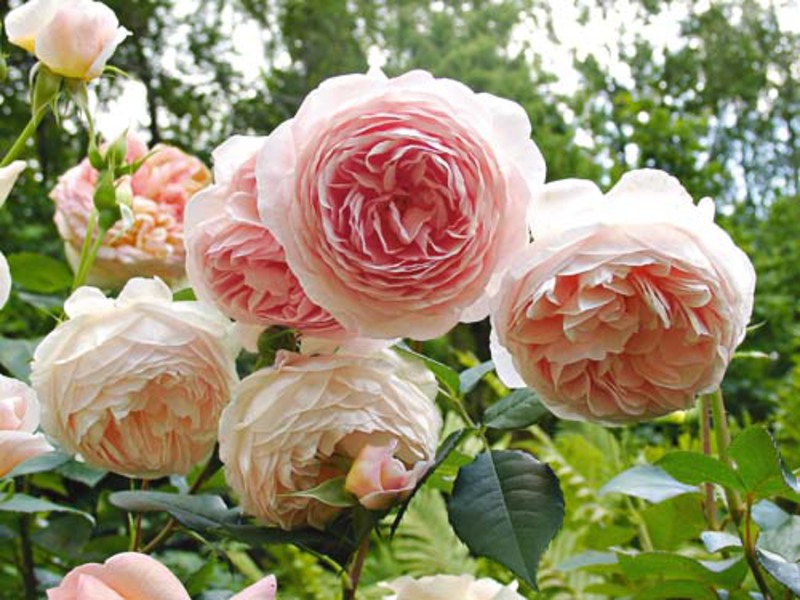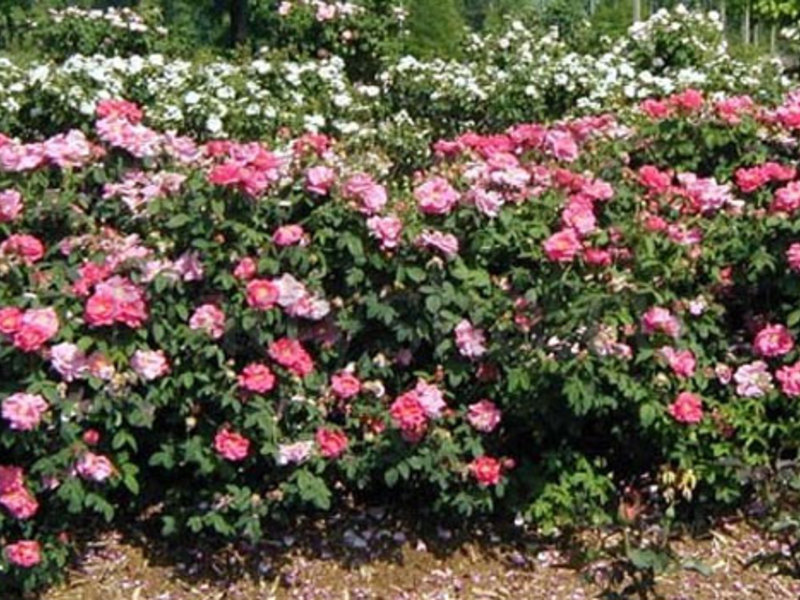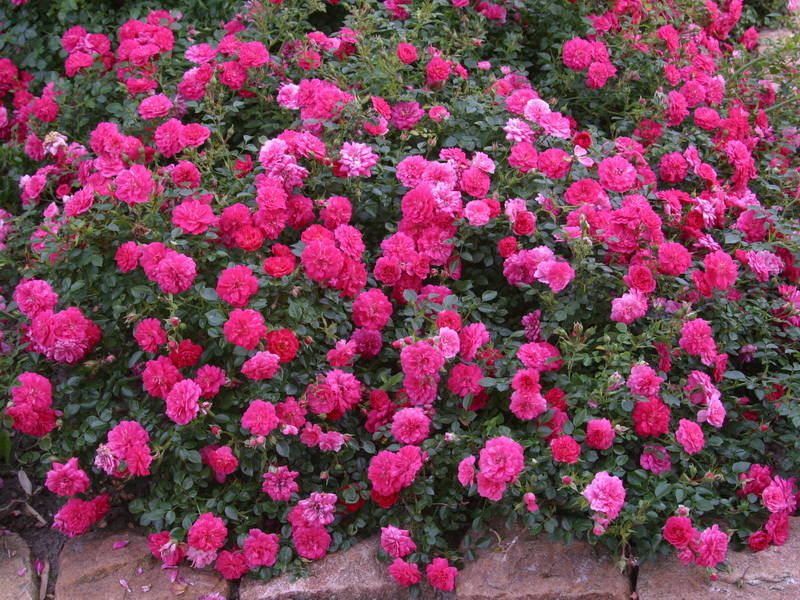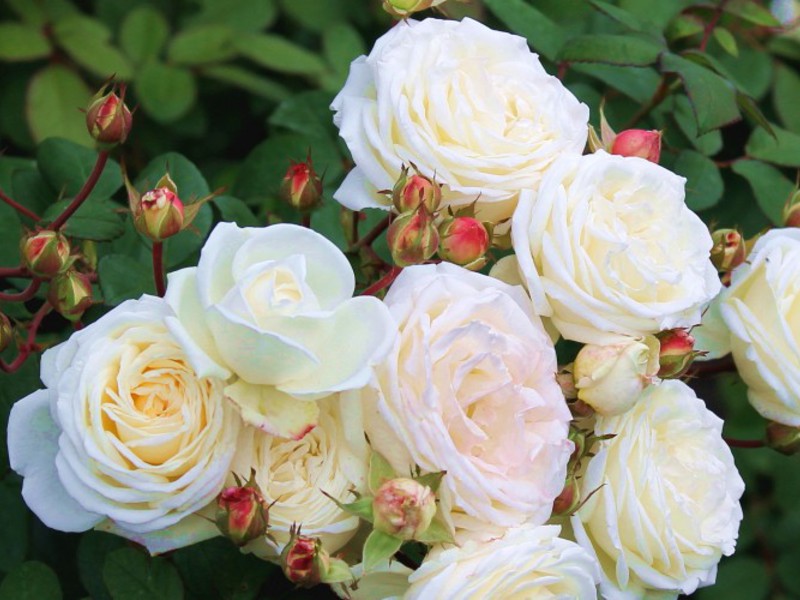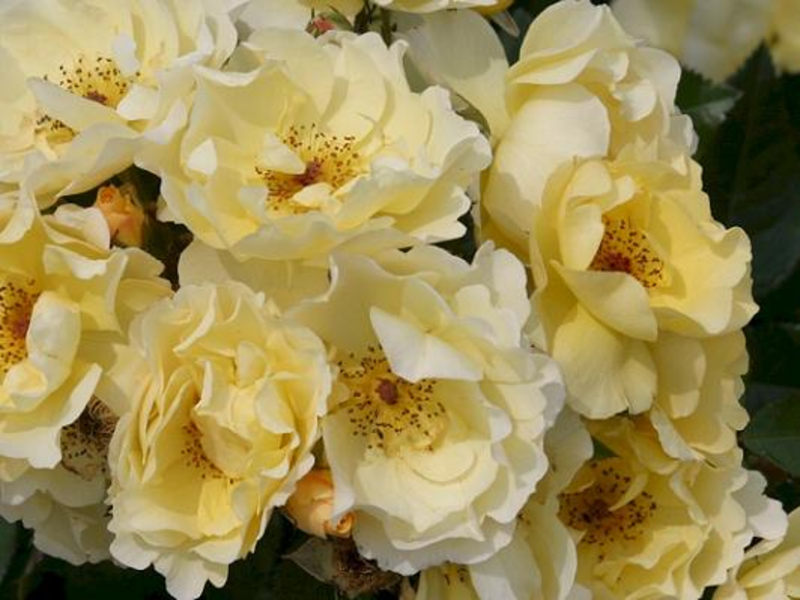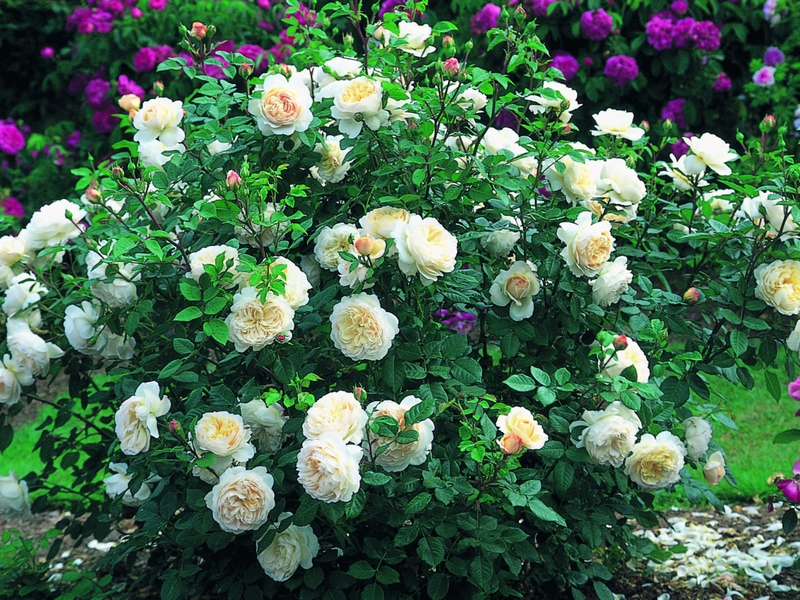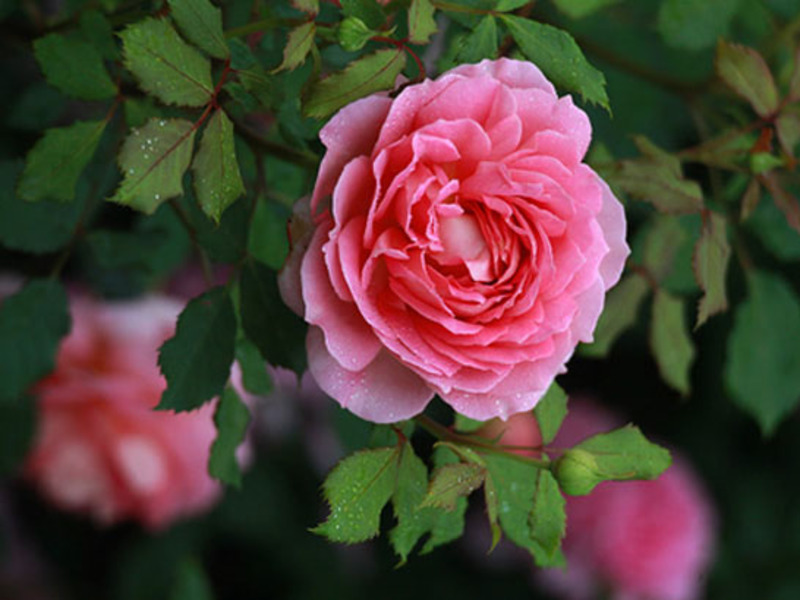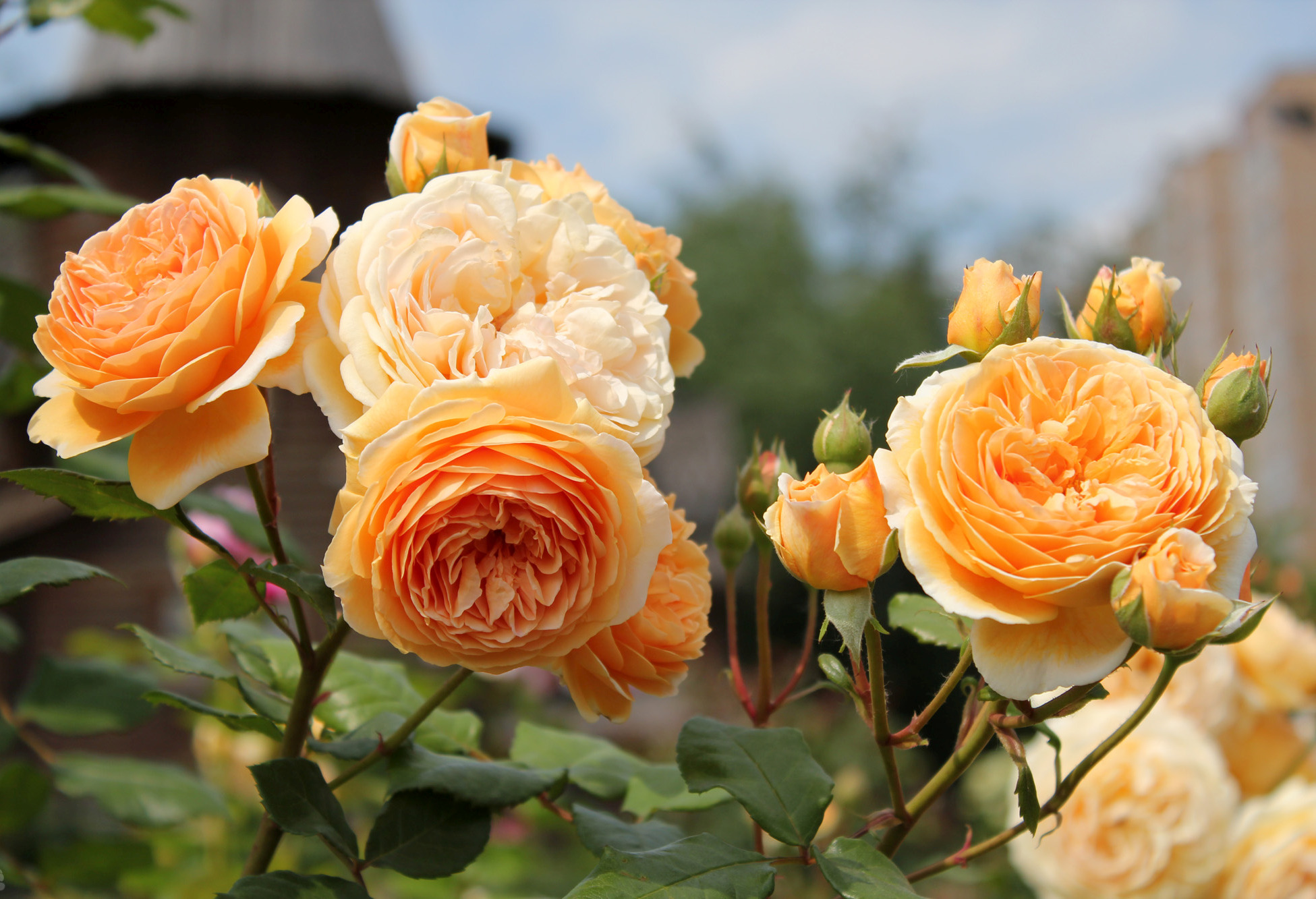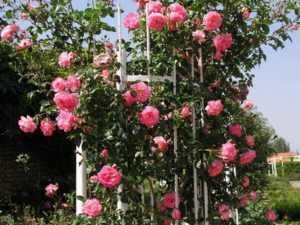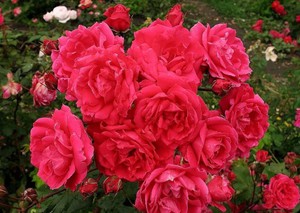Rose is a flower known to the whole world that grows in various climatic conditions. Modern rose breeders strive to give the varieties winter hardiness. For the rosebush to survive in latitudes north of average, you need to additionally cover them for the winter.
Shrubs are a newly emerged frost-resistant garden group of roses. This name appeared in 1965, like the first representatives of the classification. They were surprised by their great decorativeness and resistance to cool climates. For example, a Canadian rose tolerates temperatures of 40 degrees below zero.
Content
What is a rose - scrub
The word shrub translated from English as bush... This group is considered the new park roses. Cultivars that cannot be included in other groups of garden roses are referred to as scrubs. They combine winter hardiness with decorativeness, and also have resistance to fungi and other diseases. Shrubs are presented in very different forms: tall, low, creeping, growing in the form of a fountain. At first they were known in two forms: in the form of a bush and in the form of a semi-twisted rose. But the name of the group is a shrub rose, that is, a scrub, is still rather arbitrary. Because any rose is a shrub.
Description of the plant
 Having a wide variety of characteristics: the appearance, shape and color of flowers, shrubs are distinguished by long flowering from early summer to autumn. There are varieties of scrubs that bloom once, but most show the ability to bloom again. Many cultivars have a fruity or musky aroma when blooming. Other varieties differ in the size of the bush, which can grow up to two meters. But the general difference is resistance to disease and frosty climate... Although they need shelter for the winter, they are not as heavily protected as other groups.
Having a wide variety of characteristics: the appearance, shape and color of flowers, shrubs are distinguished by long flowering from early summer to autumn. There are varieties of scrubs that bloom once, but most show the ability to bloom again. Many cultivars have a fruity or musky aroma when blooming. Other varieties differ in the size of the bush, which can grow up to two meters. But the general difference is resistance to disease and frosty climate... Although they need shelter for the winter, they are not as heavily protected as other groups.
Sometimes a bush rose is called semi-climbing, especially in Russia. But the support is usually not used. The group also includes other varieties that grow straight, or squat, creeping - ground cover. So, the vihura rose, imported from Japan, has shoots up to five meters, on which several flowers grow in an inflorescence. This creeping plant can interbreed with other species. Creeping ground cover roses decorate the garden, tend to grow, and partially destroy weeds.
The landscape rose is distinguished by bushes with hanging shoots, sometimes reaching sizes up to one and a half meters. Abundant flowering continues until winter, the first frost.
Roses are shrubs, that is, shrubs, are of the following varieties:
- English roses, landscape, landscape. Among them is Austin's nostalgic series.
- French and German, also landscape, romantic.
- Canadian roses are winter hardy varieties.
- Ground cover roses have up to 5 subgroups. They are low and high creeping, as well as small and large drooping ones.
- Repaired shrubs, with multiple or repeated flowering.
The shape of the flowers is different, both double and ordinary, in the form of inflorescences or with single goblet... The color of the petals is also characterized by a wide and varied spectrum. The classification of roses, including scrubs, continues to evolve. Shrub roses include many subgroups, the characteristics and features of which are not specified.
Planting and leaving
Growing shrabs is not difficult, even beginners can cope with this. Such roses are unpretentious, they are located in the garden, park, both in one copy and in decorative groups. In any case, they look very beautiful and impressive.
Where and how to land?
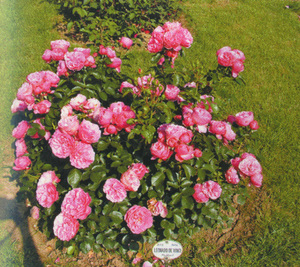 Shrub roses are planted in the center of the flower bed, on lawns, or just in a prominent place. When placing a group of roses, you need to maintain a distance between individual bushes from half a meter to two meters. The bush can be more or less wide, with very different dimensions, depending on the variety.
Shrub roses are planted in the center of the flower bed, on lawns, or just in a prominent place. When placing a group of roses, you need to maintain a distance between individual bushes from half a meter to two meters. The bush can be more or less wide, with very different dimensions, depending on the variety.
Borders or groups of 5 bushes look very impressive, especially if the roses are blooming for a long time. They make balls from flowering bushes scrubs are called fountain roses... Separately planted bushes require the choice of a variety for decorative qualities, where the presence of aroma plays an important role. Small bushes are planted from the sides to large bushes.
Growing ground cover varieties are suitable for planting on slopes, rocky terrain. In the garden, they can be planted almost everywhere, and they also grow on verandas, balconies. They either create "pink carpets" or make booms in the form of cascades hanging from the trunk. But before planting, you need to find out in advance the size of an adult plant and keep the distance between the bushes. Thus, scrubs can be used to plant areas of land both horizontally and vertically.
Care - general rules
Care needs observe the following simple rules.
- During the frosty season, the bush needs to be easily covered, especially in the early years, when the plant is just adapting. The earth is "wrapped" to a considerable height. A long shoot is bent down, pinned. Fir branches are laid under the stems so that the rose does not come into contact with water. Cover with special material and sprinkle with soil for fixing.
- Support may be needed depending on the shape of the bush.
- Reproduction occurs by cuttings. And with the help of grafting, you can get an even more frost-resistant variety. In this case, wild growth will need to be removed, otherwise the plant will look like a rose hip.
- Water in a timely manner, especially in summer, at the root, without getting on the leaves. Watering time is morning or evening.
- Crop slightly.
- Fertilize, feed using phosphorus and calcium. In autumn, apply potash fertilizer to improve wood.
- Weed out weeds, especially in spring, before overgrowing.
- Check for pests and fight if found.
About pruning scrubs
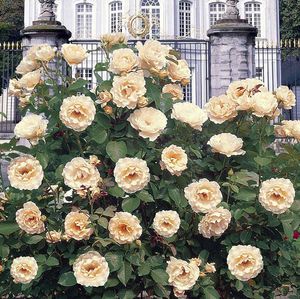 It is necessary to dwell in more detail on the methods of trimming scrubs, as the most difficult stage of care. Pruning is done to form a bush. and removing weak parts to improve growth. All methods of figuring are distinguished by moderation and depend on the type of rose. Pruning begins after snow melts in April or during planting.
It is necessary to dwell in more detail on the methods of trimming scrubs, as the most difficult stage of care. Pruning is done to form a bush. and removing weak parts to improve growth. All methods of figuring are distinguished by moderation and depend on the type of rose. Pruning begins after snow melts in April or during planting.
We select up to 5 stems, differing in strength, on which there are up to 8 buds. It is necessary to remove the weak, damaged and dead stems during the winter. And also cut off the normal ones a little so that they develop better. If the stem is more than a meter, then cut from 40 cm to half. Side also cut to half the length or 2/3, if they were 40 cm in size. Moderation of pruning is required because buds in scrubs wake up for a rather long time compared to other roses. For this reason, the buds do not react very well to strong shortening of branches, they can respond with weak flowering. And with a little pruning, flowering becomes more abundant, a second-order branch develops.
After 5 years, rejuvenation is done, strongly pruning old branches and 1/4 - young ones. You can only limit yourself to pruning for sanitary purposes and rejuvenation.In the fall, young shoots are not very short cut off, which are distinguished by wateriness, so that they do not freeze.
Ornamental value and varieties
Using various types of scrubs, they carry out horizontal or vertical decoration of recreation areas and gardens. Particular attention is paid to size. Shrubs decorate the walls with flowering with different colors, supports in the form of lattices, if they are climbing. The hedges are very beautiful. In summer, shrubs smell the air, in autumn they look beautiful because of the ripe fruits on the bush. These fruits can be used as decoctions rich in vitamin C. Birds eat them willingly.
Applying different colors of roses, they make contrasts and smooth transitions of tones. In the container, shrubs also take root and grow on balconies; decorative layers can be made from them.
Varieties - representatives
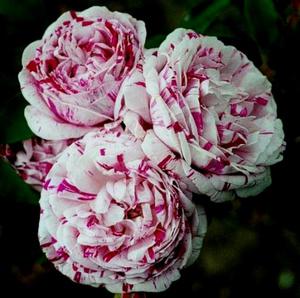 For example, Bonanza is rose with orange color, the buds are red at the edges. Orange petals have yellow and red tones, wavy edges. One bud of this double rose contains up to 35 petals. When the flower blooms, the diameter can be up to 8 cm, stamens with abundant pollen become visible.
For example, Bonanza is rose with orange color, the buds are red at the edges. Orange petals have yellow and red tones, wavy edges. One bud of this double rose contains up to 35 petals. When the flower blooms, the diameter can be up to 8 cm, stamens with abundant pollen become visible.
Petals and leaves do not need to be cut off, as they themselves fall off, having lost their decorative effect and freshness. The smell is light. This representative of the shraba belongs to the remontant species, that is, it blooms many times before winter. Tolerance to hot temperatures, disease resistance and frost resistance are also present. The plant reaches a height of just under 2 meters, width - about a meter, branches are straight.
The Snow Ballet variety also has double flowers with white color... Sometimes green, creamy tones appear. Flowers arranged in clusters, up to 6 cm in diameter, lush and long flowering, barely noticeable pleasant smell.
Finally
The group of scrubs is one of the largest in terms of the number of representatives. Breeders all over the planet have contributed to its development. Resistance to powdery mildew and spotting, other diseases was the goal of breeding varieties, in addition to promoting the group to the northern growing areas. Duration of flowering and unpretentious care delight gardeners. With such roses you can decorate large spacesas well as many varieties are beautiful singly. Excellent health and variety give scrubs the first place in the classification of roses.
